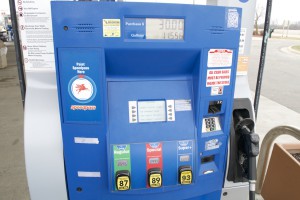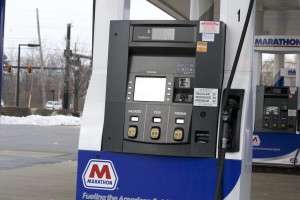
Gas prices are falling as inventories continue to build after the hurricanes. (Photo credit: Brendan Strong)
The price of gasoline continued to drop in states east of the Mississippi River, with the exception of a handful around the Great Lakes, paying as much as eight cents less at the start of this week, according to AAA.
While gas prices are more expensive than a year ago, the past five weeks of sustained weekly declines indicate that demand may be leveling out as travel declines after a busy summer alongside refineries and pipelines returning to pre-hurricane operations, AAA reported.
“Gas stations are steadily dropping pump prices for the majority of motorists, especially regional markets in the Northeast, Mid-Atlantic, South and Southeast,” said Jeanette Casselano, AAA spokesperson. “Drivers will see stabilized or decreasing prices at the pump throughout this month due to high refinery production rates and seasonal demand.”
In September, Hurricane Harvey drove gas prices to the highest average price of the year – $2.67. That was a 32-cent increase in of 12 days. Now nearly seven weeks post hurricane, gas prices have dropped 20 cents since Sept. 11.
(Gas prices fall as autumn hits the U.S. For the story, Click Here.)
The nation’s top most expensive markets are Hawaii where gasoline is $3.11 cents per gallon, California at 3.04, Alaska at $3.00, Washington at $2.93, Oregon at $2.77, Nevada at $2.73, Connecticut at $2.72 and Idaho at $2.71, while gasoline in Washington D.C. costs $2.70 per gallon and New York at $2.67.
The nation’s markets with the largest weekly changes were Ohio, where gasoline climbed 13 cents per gallon, Michigan where prices jumped 12 cents per gallon and Indiana were prices climbed by 10 cents.
On the other hand, prices in South Carolina, Georgia, Tennessee, Florida and Texas dropped by seven cents per gallon. As prices steadily decline for motorists in the South and Southeast, they will notice today’s gas prices are double-digits below prices compared to one month ago, AAA said.
(Click Here for details about the national average fuel economy dropping.)
While the South and Southeast tout the largest inventory of any region in the country, levels are both 5 million barrels below pre-Harvey rates and levels this time last year. As inventories continue to build, motorists can expect gas prices to drop.
The federal Energy Information Agency report noted that there was decline in production rates in the lower 48 states and Baker Hughes that the U.S. declined as well. When combined, both data points (crude production and oil rigs) may point toward reduced U.S. crude production and its potentially reduced contribution to global supply, which may help bolster the price per barrel of oil as the fall continues.
However, growth in oil demand is expected to match the increase in production next year from non-OPEC countries of OPEC and could effectively cap oil prices throughout 2018.
(To see more about Ford’s plans to address Explorer exhaust fume concerns, Click Here.)
As a result, market observers will closely watch the upcoming OPEC meeting, scheduled for November 30 in Vienna. OPEC and non-OPEC members who have agreed to cut production through March 2018 will meet to discuss the status of the agreement and may decide to take additional measures to deepen the agreement’s market impact.

